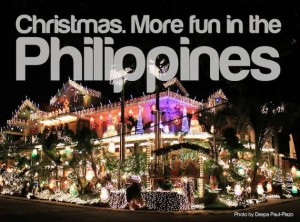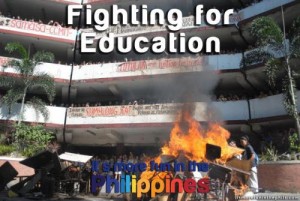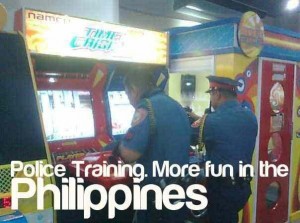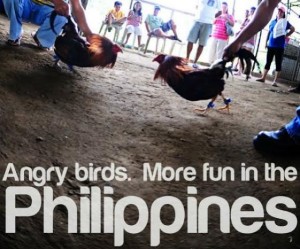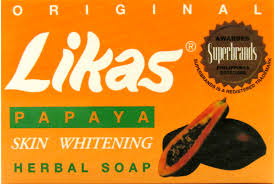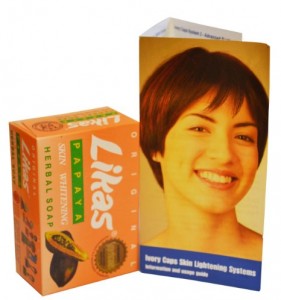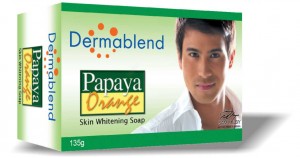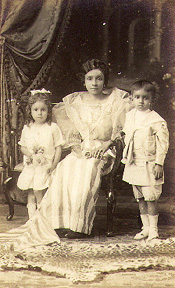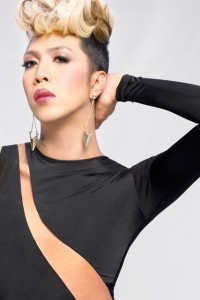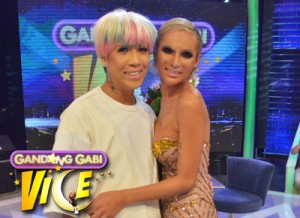Power Point 🙂
Author Archives: admin
Is it really more fun in the Philippines?
Nido Commercials
NIDO is a product run by the mega company, Nestle. The world’s leading nutrition, health and wellness company is known for products such as KitKat chocolate, Häagen-Dazs ice cream, and Purina Pet food. Those are a few products popular here in North America that are run by Nestle. NIDO is a dry powdered milk beverage sold world wide, mainly for child consumption. It is a beverage that is said to contain many vitamins and minerals, essential to help kids in their growth and development. NIDO is a popular product in the homes of Filipino families with young children.
Today, I have a fun little activity for you guys. I have provided three Nestle Philippine NIDO commercials below, all of which are Thirty seconds in length. Nestle, being the mega company they are, produce the most high quality commercials shown on Philippine TV. I want you folks to observe all three videos and find all the similarities you can between them. Watch the videos in any order you desire,and take note of the reoccurring qualities regarding things like the actors, the acting, the videography, setting etc..When you have finished watching all three commercials, you can take a look at my observations I came across when viewing the videos. With my observations, you can check if you’ve found the same reoccurring qualities I did, and comment on the post if you’ve located something I missed. GO!
Similarities I found:
- light skinned actors
- mother and child only
- extremely bright lighting
- ~90% of dialogue is in English
- Americanized accents
- clean public areas
- seemingly private settings (gated communities)
- most have foreign-looking faces
- unnaturally thankful children
What is wrong with Philippine Cinema?
Filipinos are obsessed with their films and teleserye’s (which are basically Filipino soap operas or Mexican telenovela’s). All points included in the link below are legitimate, if you ask me… The link below provides part of the reason why my parents and the rest of my family no longer watch Filipino films/shows. Filipino Films are repetitive and bias, but mysteriously, the country’s people still look forward to new productions released by the film industry. I believe the Philippine film industry needs a lot of improvements, and unless they begin making drastic changes, I’m sticking to my Canadian Netflix. Here are the 10 things wrong with Philippine Cinema:
http://manilarules.com/2013/07/14/top-10-things-wrong-with-mainstream-philippine-cinema/
Filipino films truly make me cringe by their quality, but do you feel the same with films from where you are from? Let me know by commenting below!
Thanks for viewing!
Filipino Mestizo
In the Philippines, mestizo is a word incorrectly used to describe an individual of half Filipino and half white European or american descent, and nothing other. A mestizo is someone who has the physical features Filipinos of no foreign ancestry can attain. In the Philippines, having the following are the prevalent attributes to being called a mestizo: a light skin tone, and an arched or pointed nose. Many Filipinos forget or do not associate Filipinos mixed with non-European or African blood to be labelled mestizos. An example of this are the large filipino-chinese (mestizo de sangley) community in the Philippines, or someone of african and filipino descent. The official definition of a mestizo is “a person of mixed racial or ethnic ancestry”. The word mestizo is also used in other Spanish colonized countries.
The rappler article attached below, talks about a Spanish scientist who conducted a research, to genetically map the demographic history of the Philippines. His findings and description of the term “mestizo” are very interesting. Take a look!
http://www.rappler.com/nation/
“natural exfoliant”
The Philippines is obsessed with obtaining fairer skin. Many hold the mentality of associating beauty with having a light/white complexion. ‘Likas Papaya’ is a major skin whitening soap in the Philippines and has even made appearances on shelves of Filipino corner stores in North America. Products like these are sadly evident throughout countries in Asia, and countries in Africa.
Billboards all across the country are almost always occupied by models with mixed race faces. Whitening products in the Philippines are always endorsed by mestiza’s or mestizo’s. A Filipino mestiza/mestizo is someone who is either half Spanish, or any other race not native to the Philippines. All these mixed race models obtain a natural lighter skin complexion due to genetics, and become the notable figures for whitening products such as ‘Likas Papaya’. Knowing this, it is definitely false advertising to the naturally brown light-skinned hopefuls.
The unsurprising fact about the model in the image above, is that he is not of full Filipino descent. Sam Milby, the man on the soap bar package, is a famous actor, model and singer in the Philippines. He was born in the United States to a filipina mother and a caucasion American father. As a light-skinned figure for a Dermablend skin whitening soap, Sam Milby plays a role in misleading its buyers. Having him as model for this product is misleading to its buyers, because he is half white, it is simply unobtainable to achieve such foreign white skin without it being a result of genetics.
Why are Filipino’s wanting lighter skin? Many believe lighter skin is beautiful. Why do many Filipinos think this? It all has to do with history. This same history plays out in countries that have been colonized by ‘white-face westerner’s’.
For the Philippines, empires who had the ability to redefine Filipino beauty happens to be the Spanish and the Americans. During the Spanish colonial years, the skin colour hierarchy in society was put into place. The labeling of individuals based on their complexion, has caused native Filipinos to become second class citizens in their own country. To have white skin meant you had grown up in a high class Spanish family. Being high class, meant you had the riches to buy the most fashionable clothing, and accessories that would enhance ones beauty. Due to the native Filipinos having to go through skin colour hierarchy for three whole centuries, the mentality of ‘white beauty’ has never left the country since. This societal assimilation is prevalent in countries with similar colonial upbringings.
Miss Universe Philippines 2015
The half Filipino, Binibining Pilipinas title holder, Pia Alonzo Wurtzbach, is representing the Philippines in the annual Miss Universe Pageant this year. Her journey to the Miss Universe pageant competition has not been smooth due to criticism from franchise holder, Donald Trump. Donald Trump owns the Miss Universe organization and announced in the beginning of summer to disqualify Miss Philippines, along with Miss Japan from competing in Miss Universe 2015, who both happen to be bi-racial. The reason for Trumps decision to disqualify Miss Philippines and Miss Japan was because of their ethnic background.
Pia Alonzo Wurtzbach is half Filipino and Half German. Pia was born in Germany but was raised in Cagayan de Oro city, Philippines and is fluent in Tagalog. Miss Japan Ariana Miyamoto, is half Japanese and half African-American. Ariana has lived in Japan her entire life, and is fluent in Japanese.
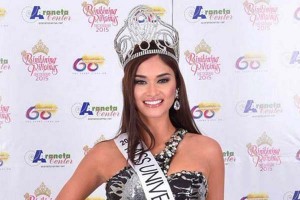
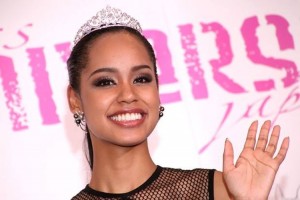 A factor that Trump used in favour of his decision to disqualify both Asian nations from competing, is the representation of beauty in every country. Donald Trump said, “the goal of Miss Universe is to choose a world beauty that represents her country to the fullest extent. Having a half and half candidate from any participating country is not in keeping with the Miss Universe ideals.”
A factor that Trump used in favour of his decision to disqualify both Asian nations from competing, is the representation of beauty in every country. Donald Trump said, “the goal of Miss Universe is to choose a world beauty that represents her country to the fullest extent. Having a half and half candidate from any participating country is not in keeping with the Miss Universe ideals.”
In western society, we prize individuals of mix descent because they generally carry the beautiful, exotic, yet “traditional” western features all at once. Many criticized Trump’s decision for being unreasonable and racist. Maybe Miss Philippines and Miss Japan are given an unfair advantage?
Trump’s point of choosing world beauty that represents ones country to the fullest extent, is understandable in some cases. If this rule is to be in affect in every nation, Miss Universe USA would have to be a pure Native American, and not of European, African or Asian descent. It makes sense to disqualify someone for example, who is a Caucasian American representing the Philippines with no historic or sentimental connection with the country and its people. In my opinion, because Miss Philippines and Miss Japan both grew up in their native country, and speak their nations official tongue, I do not see the problem in them competing for Miss Universe.
Due to Donald Trump’s recent racist comments toward Latin American immigrants during his run for US presidency, a couple of Latin American countries have taken a brave choice to back out of the 2015 annual beauty competition. These countries include Costa Rica, Colombia, Puerto Rico and a few others. This has resulted in Donald Trump allowing Miss Japan and Miss Philippines to attend this years’ Miss Universe Pageant.
The difference between Pia Alonzo Wurtbach and Ariana Miyamoto, is that Pia has a foreign non-native Filipino surname, while Ariana is under her mothers native Japanese last name. In Japan and the rest of the world, Ariana has received criticism for having the ability to represent Japan even though she is bi-racial. In the Philippines, it is not peculiar to have a mixed Filipina representing the country in national and international pageants. The Filipino people make it seem that halfies are the country’s super power to winning in international pageants. As long as she has a sincere long relationship with the country, and speaks Tagalog or another native Philippine language, it is generally accepted in the Filipino communities in and outside the nation.
The video attachment below is a short BBC news interview segment with Ariana Miyomoto, on how life is like in Japan, being the first mixed race woman to be given the title of Miss Japan:
sources: http://adobochronicles.com/2015/03/15/donald-trump-disqualifies-miss-japan-miss-philippines-from-competing-in-the-2015-miss-universe-pageant/ , Youtube: Ilang Latina beauties, hindi sasali sa Miss Universe
The Country’s Favourite Homosexual
Who is the country’s most successful comedian?
VICE GANDA is one of the biggest names in the Philippine show business. In the Tagalog language, the word ‘Ganda’ is short for ‘Maganda’, which translates to the feminine word for ‘beautiful’. Vice Ganda is comfortable being addressed with the pronouns, he and him. He was born with the name Jose Marie Borja Viceral, but is better known by his stage name, Vice Ganda. Vice Ganda is considered one of the highest paid celebrities in the Philippines, along side other singers and actors/actresses. He started off as a comedian, and has expanded to become an endorser, actor, and has recently began hosting his own evening show titled, “Gandang Gabi, Vice”–“Good Evening, Vice”.
What people might not know about the Philippines, is that it has a fairly large LGBTQ community, but because it is frowned upon in the film industry to be other than a cis-gendered male or female, there are not many people like Vice in the spotlight. Vice Ganda’s stand-up comedy, is said to be both observational and sarcastic material. Although many Filipinos do not look past the fact he is homosexual, he is considered one of the funniest individuals in the country. Being very open with his sexuality, he has come to be one of the most influential artista’s in the nation.
One of his greatest accomplishments was starring in a film considered to be the highest-grossing movie in Philippine cinema, and is the first openly gay endorser of multiple products in the Philippines. He often holds comedy tours in and outside the country, to perform and collaborate with other well known Filipino celebrities.
Here in North America, we can be quick to name a hand full of celebrities open about their sexuality, such as, Ellen DeGeneres, Neil Patrick Harris, and Caitlyn Jenner. In the Philippines, Vice Ganda is a big name. He is known for uplifting and inspiring the LGBTQ community in Philippine show business. Due to his inspirational rise to fame, there has been a slow increase of gay and transgender people entering the spotlight. Maria Sofia Love, who is a transgender woman, gives thanks to Vice Ganda for providing her the opportunity to be featured in multiple television productions, and is now the first transgender socialite in the Philippines.
If you are interested in watching a teaser commercial for his show, and are comfortable with not understanding the language, feel free to view the video below:
…and after watching the video, share your thoughts on this post, in the comment box below.
Filipino-American Identity
Andrew and David, also known as the Fung bros, are Chinese-American youtubers. They create video content on Youtube relating to Asian food, Asian cultural differences and American pop culture. They approach the topic of Asian diaspora in a very cool and comedic manner. This particular video caught my interest because they focused on Filipino-Americans and their identity.
Hope you find the video intriguing.
I will be posting new content every week, so stay tuned for more awesome posts!
How Many? The Philippines has a large population consisting of approximately 100 million individuals. Although, this does not compare to its fairly close Asian neighbours, China and India.
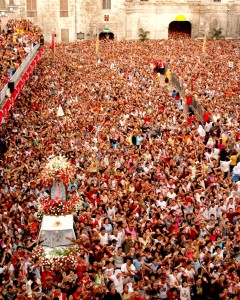
These two nations hold the top two largest populations on the planet. India having about 1.2 billion people, while China ranking number one, having approximately 1.4 billion people within its borders.
Comparing western nations, such as Canada and the UK, with the population of the Philippines, it is still an outstanding difference. Canada having a population of about 35 million people and the UK having almost double that, with around 63 million people. When combining the numbers of these two western nations, it still does not surpass the population of the Philippines! 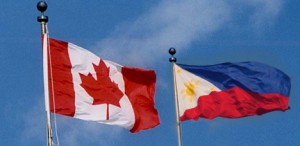
The total population of Filipinos with permanent residency in Canada is around 500,000 individuals, with most choosing to live in the province of Ontario.

